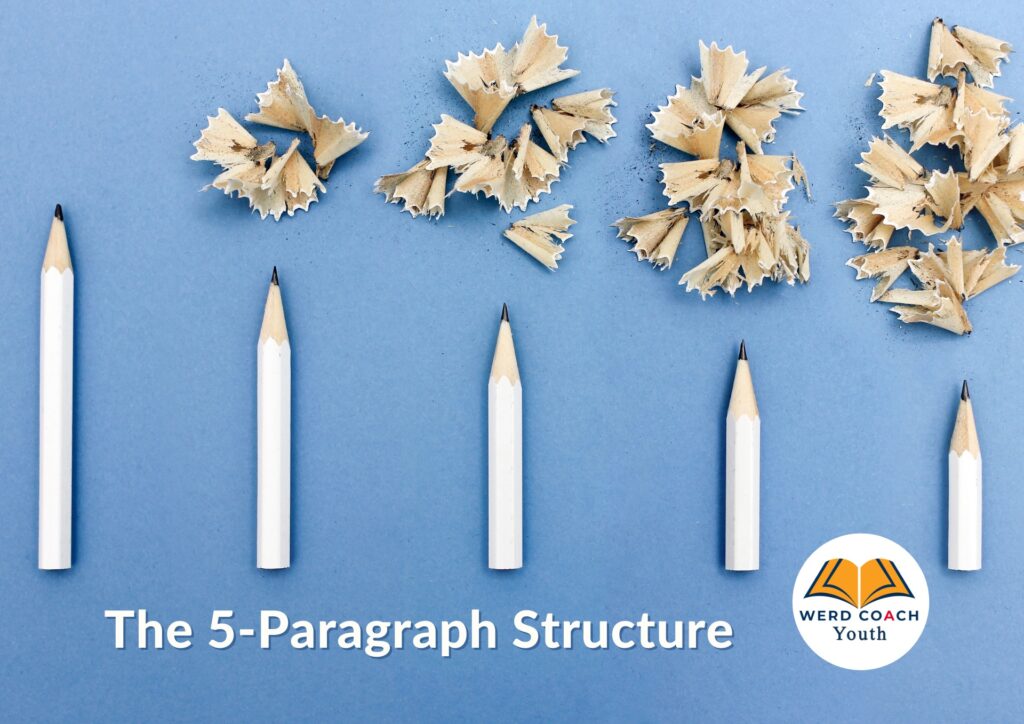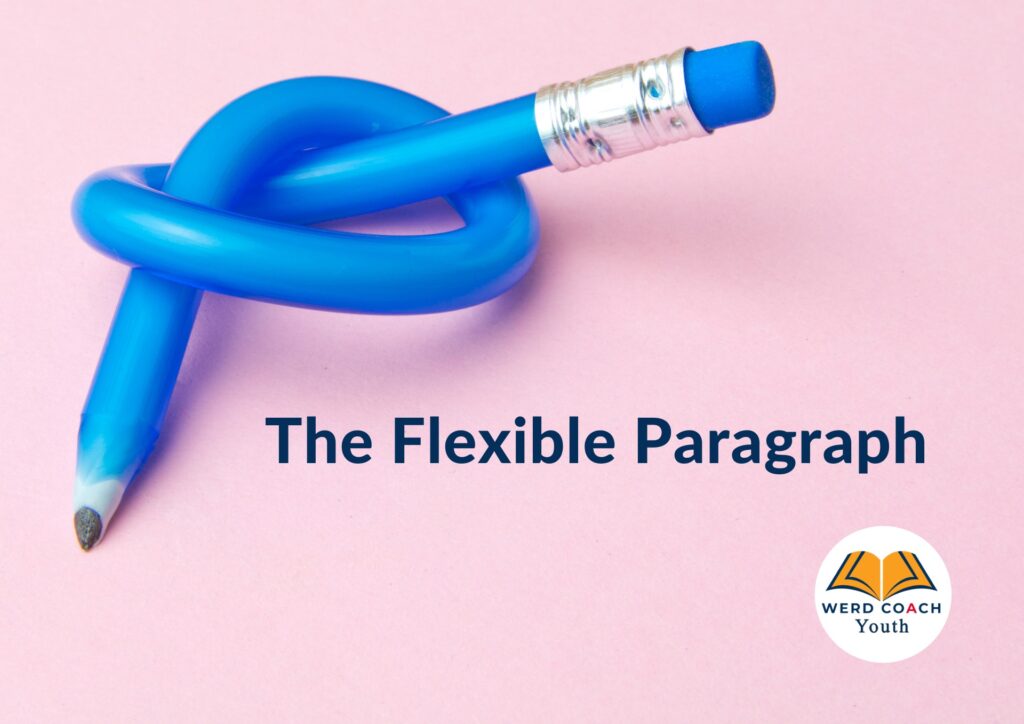After young writers get their ideas together and know what they are going to write about, the next step is organizing the information. Keeping to a structure/format helps writers manage how their writing unfolds. Like all writing, both narratives and reports follow an introduction-body-conclusion format. In narrative essays, the plot provides a structure for young writers to follow. Each element of the plot, once developed sufficiently, guides the writing from beginning to end.
Reports have their own structure, but it’s not as easy to identify or guide as a narrative. To understand how reports develop, young writers must think about the type of report and what readers need to understand the information.
For example, competition reports must include rules, incident reports must include information about events leading up to the situation, and activity reports usually include guidelines for the activity.

The 5-Paragraph Structure
While there is no set number of paragraphs required, a 5-paragraph structure helps writers develop their ideas logically.
NARRATIVES
Introduction – hook reader, introduce character and goals, describe setting
Body Paragraph 1 – Introduce action and conflict (start things off with the complication, and give the character’s reactions)
Body Paragraph 2 – Increase the conflict and give character’s reactions to that.
Body Paragraph 3 – Increase the conflict again and give character’s reaction to that, but this time problem is solved and goals are achieved.
Conclusion – Explain how characters react to accomplishing their goals, show how things get back to normal, but show how things have changed as characters have learned lessons and now have their desires fulfilled.
REPORTS
Introduction – State who was involved, where the incident took place, what the incident is, and when it happened.
Body Paragraph 1 – Explain the events leading up to the incident, what happened directly before the situation occurred. For competitions, give rules. For activities, give guidelines. For events talk about the program. For accident, give the situation just before the accident.
Body Paragraph 2 – Describe the main situation, stating what happened and who did what
Body Paragraph 3 – Give reactions and immediate responses to the incident or accident. For competitions, activities, and events, say what happened right after the main situation. Reactions to prizes received, accomplishment of task, or closing of the program.
Conclusion – Document the outcome of the incident or accident, any punishment or lasting outcomes. For competitions, activities, and events, say what participants will do next (reported speech only) or any announcements given about next steps.
Once young writers work within this type of structure, they will produce narratives and reports that readers will be able to follow and understand.
However, it’s good to note that the number of paragraphs is just a guide because the narrative paragraph can be flexible.

The Flexible Paragraph
One thing young writers should keep in mind is that not all paragraphs are the same. For one thing, narrative paragraphs are not as rigid as report paragraphs.
Report paragraphs are expected to follow the topic-sentence format. There is a main idea stated in a sentence at the beginning, then details are provided to explain the topic sentence. Finally, a sentence is given to close off the paragraph.
Each paragraph is connected to the other with transition words that help readers follow the sequence of actions of the report. The report paragraph is a formal structure that helps readers see the logical progression of events.
The narrative paragraph, on the other hand, is a unit of expression. And when dialogue is introduced, it becomes flexible and often doesn’t look like the conventional paragraph.
The best way to write dialogue is with each new speaker starting in a new line that is indented. So, in a sense, each new speaker has their own paragraph.
Additionally, narratives work better with transition phrases and not transition words. Phrases complete the flow of ideas and allow for vivid description and creativity.
When young writers are following the 5-paragraph structure for narratives, they should use it as a guide and not feel like they are bound to 5 paragraphs only.

